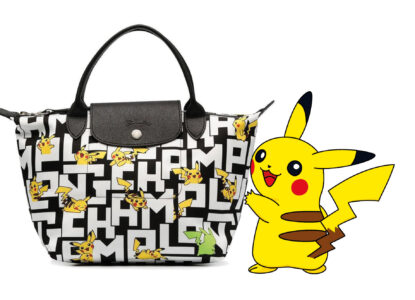
luxury conquers the no canal
Feared by luxury houses at the beginning, making most of them late adopters, the digital world is now a major and unavoidable axis of their ...
Our Expertise
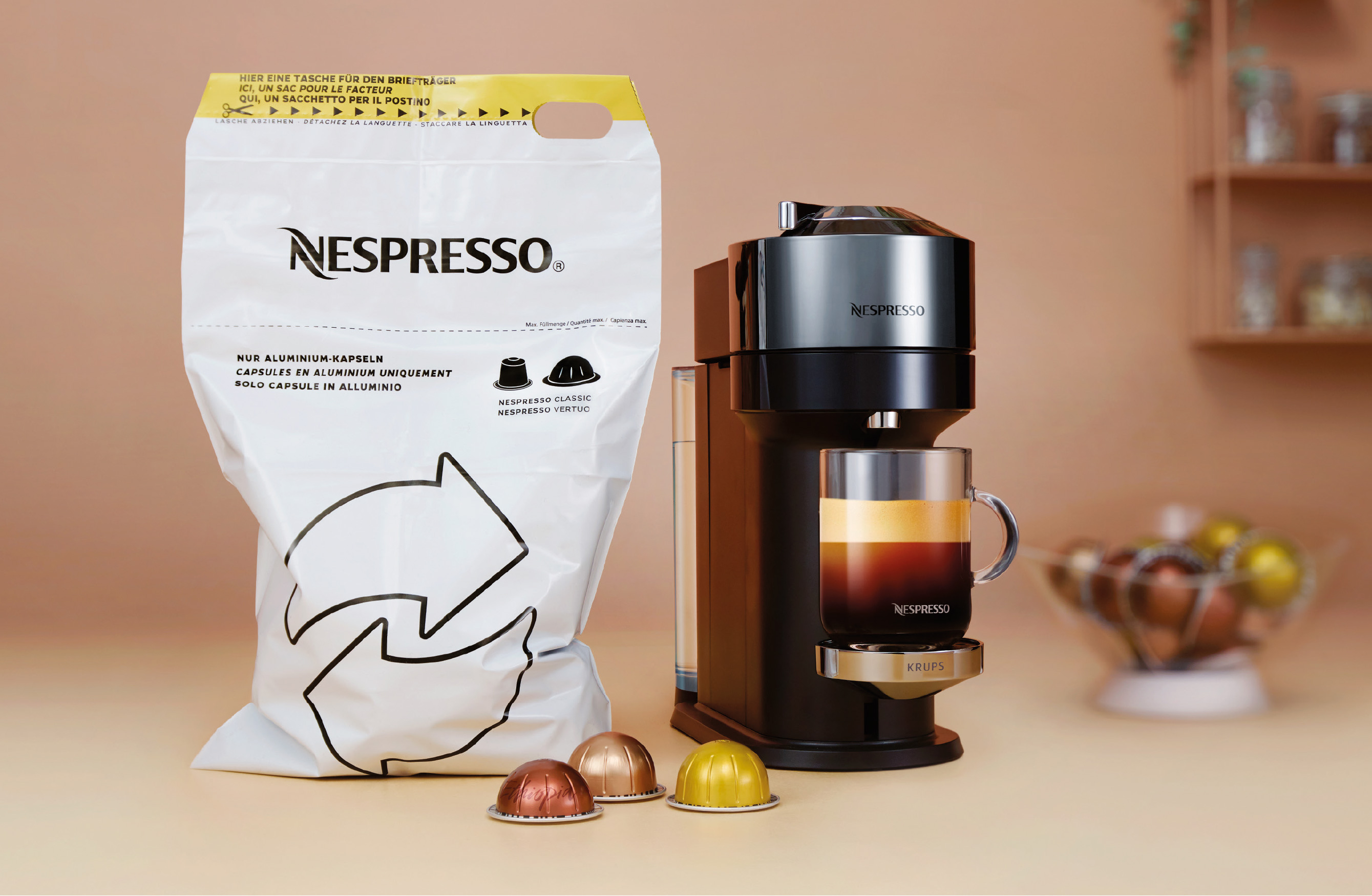
Jean-Luc Valleix, Director of Nespresso Switzerland and Claire Cloatre-Vinzant, Marketing and Communication Director for the Swiss market, answer our questions.
Thanks to a management team with new ambitions for the Swiss market, Nespresso has a fine transformation program in prospect: acceleration, innovation, sustainability and “Swiss attitude” for this international brand whose DNA and foundations are above all Swiss.
Jean Luc Valleix, you were at the beginning of the Nespresso adventure in the 90’s where you led the French launch and you come from the Canadian market where you developed and transformed the model. What lessons have you learned from these two very different experiences? What can you tell us about the main drivers of such successes?
JLV : I have been lucky enough to experience the Nespresso adventure at very different stages of the brand’s life.
Originally positioned as the “espresso par excellence” and perceived by our first clients as “accessible luxury for all those who love coffee”, Nespresso has developed a bold, new approach to direct relations with the end consumer, the “Nespresso Club”.
The brand has thus built a complete, local ecosystem, defined by a multitude of moments of truth… from the discovery of the Nespresso Original system in a boutique, at an event, at a friend’s house, to word of mouth, through multiple contacts with the company’s various departments/people.
Present from the beginning of the launch of Nespresso in France, I experienced the entrepreneurial phase of a “young start-up” and the gradual transformation of a product start-up into a perennial brand close to its consumers.
So you were part of a start-up before time?
JLV : Yes, a real start-up, innovative, agile, a real entrepreneurial adventure: freedom and some obligations to undertake, to dare, to take risks, within a community of young talents coming from very different backgrounds allowing this creative mixing, feeding on the best practices implemented in other universes to build day after day a new business model.
Nespresso France was a real human adventure with many challenges. We started as a team of three in a 120 m2 office in Levallois Perret, in an open space where the first telephone service team and the stock for the preparation of orders and deliveries cohabited. The potential of this new Nespresso concept was there to be revealed to the general public: strangely enough, the only study carried out among French consumers concluded, despite a real interest in the product on the part of those questioned, that there was no potential in France. This finding is linked to a direct business model that is too far removed from the standards and buying habits of mass consumption.
A wonderful challenge for our fledgling team, many of whom came from mature industries with established models, a team that, like me, wanted to think outside the box and imagine a different future for Nespresso. Totally “client-centric” before this approach became a new standard, Nespresso has accompanied and often anticipated the expectations of its consumers to serve them beyond the quality of their espresso in a cup.
Many anecdotes come to mind, such as deliveries made in real time, by scooter, during strikes at the Post Office, and the nice surprise of the customer who was despairing a few minutes earlier on the phone not to receive his order, or the transformation of our first floor office in the 17th arrondissement of Paris into the first boutique before its time to satisfy the queue of our “Members” and thus offer an authentic Nespresso experience with our coffee specialist.
Nespresso France began with a vision shared by a small team passionate about customer relations, working to offer the best espresso to the French public.
We then grew at full speed through the launch of new coffees, machines, the development of after-sales services at home, the launch of e-commerce, the opening of real stores, the collection of used capsules and our communication campaigns with our ambassador Georges Clooney.
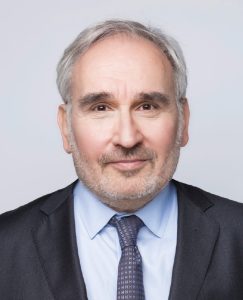
Jean-Luc Valleix, Directeur de Nespresso Suisse
I learned a lot from this first entrepreneurial experience, a human adventure rich in daily challenges. In 1997, I left Nespresso France, which was growing rapidly after its pioneering beginnings, to continue to open my mind to other worlds and geographies.
I returned 10 years later to Nespresso France, which had become the benchmark brand in the consumer coffee market, with a new challenge: to redeploy the division in charge of “Out of Home” activities, thus offering all our clients the opportunity to find their brand in all the places they visit. How do you fully combine the entrepreneurial DNA of Nespresso France’s beginnings with the logic and processes of a now established company? Once again, a magnificent human adventure, full of challenges.
Seven years later, the opportunity to enter an important market in the expansion strategy outside Europe, in North America, presented itself with Canada.
Nespresso is a recognized global brand with strong European roots, so how can we continue to deploy our brand and establish it locally in a market where the product culture, customs, consumption practices and the coffee moment are already established with historical and legitimate regional players, such as the Tim Horton’s and Starbucks coffee bar chains? Each country has developed its own coffee moment over the course of its history.
Have you developed the Canadian market strongly? What were the key success factors? How many of you were at Nespresso Canada?
JLV : I arrived in Canada in an organization of 250 people who were just as passionate about an adventure that had begun five years earlier: no longer really a start-up, already a visible and recognized brand, but not yet a company structured to grow faster and thus seize a potential at hand.
Six years later, we were almost 1000 employees with a fivefold increase in sales and market share in line with our initial ambitions. This beautiful growth was born first of all from the understanding, the adaptation to this provincial Canadian diversity, the mixing of all the talents that joined us during six years.
Our credibility, our recognition with Canadian consumers, beyond the strenghtening of this unique direct relationship with our customers and different initiatives in each of the Canadian provinces, has been to bring all our values, our initiatives on the subject of sustainability, which are fundamental for Canadians, and especially in Quebec and British Columbia. This is how recycling policies were born: from collection bags in the colors of the Canadian Post Office (red), to towns accompanying us (green) in this collective commitment, but also the second life of coffee grounds and aluminum.
In short, the meeting of common values, a product offering, a direct relationship in line with the country’s expectations, but also the fierce desire of our diverse teams to succeed in this second chapter of Nespresso Canada: discovering, daring, risking, testing, failing, and bouncing back collectively will have been the key words of these six years of permanent agility.
You have put together a new management/communication team and have been looking for talent to meet your growth challenges, can you tell us more about your “Mancom” committee?
JLV : It is with the same collective spirit of integration, curiosity about redeployment and humility that our Swiss team has been mobilizing for the past few months to achieve its ambitious objectives within the market.
I have been looking for new and very different talents to compose our management team, plural, mixed in terms of professional backgrounds, balanced (“gender balance”) that can carry a strong collective project to our colleagues and collaborators. We have shared and built this vision to serve very concrete objectives so that our market becomes once again the pilot market, the incubator for new Group initiatives. This strategy, called “TRI725 Vision”, has been shared with all Nespresso Switzerland teams to guide all our actions, encourage individual initiatives and focus all our energies on this long-term objective.
I am very happy that Claire Cloatre-Vinzant has joined us in this new adventure. She embodies and drives communication, innovation and marketing. Coming straight from the Marketing Innovation Product department at our headquarters, Claire’s mission today is to reaffirm the brand’s DNA of sustainability, the “pride of being Swiss” but also to foster the emergence of new opportunities and new distribution channels. TWINT, with whom we have been collaborating since the end of 2018 is the perfect example of the possibility of implementing new service spaces. In terms of orders, today we are proud to announce that we are THE preferred and unique coffee brand in Switzerland partner of the new TWINT+ service.
Claire, is the arrival of your headquarters on the Swiss market a sign of the desire to increase the power of Nespresso’s communication and local marketing? Is “Swiss made” a promising value?

Claire Cloatre-Vinzant, Directrice Marketing et Communication de Nespresso Suisse
CCV : Yes, local is key. My challenge is also to put it to music and to work on an ever finer local customization in our various cantons to work on this local and regional integration which is one of the recipes for the brand’s success. The magic of “Glocal” in all its power! And yes, Switzerland is a carrier value. It is a carrier within the Swiss market because the Swiss population is very attentive to its local brands and is very concerned about protecting its economy. But Switzerland is also an important value on the international market. A guarantee of quality, durability and know-how, many strong Swiss brands display their “Swissness” around the world.
Jean-Luc, you are tackling the Swiss market where the brand has taken its roots and contributes to the local economy by producing machines and capsules on the territory and by employing more than 2000 people in Switzerland. Tell us about your new ambitions for the Swiss market.
JLV : 1. to reaffirm and legitimize our Swiss identity in the eyes of the Swiss consumer in all the diversity and richness of its cantons/regions.
2. Reinvent a new Nespresso coffee moment for a millennial population introduced to coffee by coffee shops and interested in new consumption moments.
3. To embrace, solidify, as a pilot country, a driving role as an “incubator innovator” market for the Nestlé Group, facilitated by a geographical and historical proximity to our Headquarter.
Other challenges close to the brand’s DNA: innovation. Nespresso has just launched its new Vertuo Next machine in 2021. Do you believe in this new coffee format? Is the Swiss consumer a good target for this new coffee?
JLV : There is a big change in beverage consumption, especially in Switzerland. Younger generations have adopted new ways of drinking. We adapt every day by offering a wide variety of products and coffees. Vertuo Next offers a multitude of tastes, sizes and coffee styles at the touch of a button with its unique Centrifusion technology. Once again, we are pushing the boundaries of innovation.
CCV : Yes, I believe in it. It is my culture to reinvent and accompany, even anticipate, trends, needs and desires. Vertuo Next is a huge opportunity and offers a multiple way of consuming coffee. Cold, hot, iced, with milk, chocolate…, all recipes are possible like a real barista, from home.Let’s not forget that coffee is a true art of living. The young generation, our millennials, those who stir up all the envy, don’t drink coffee like they used to.
Switzerland is a wonderful host country for our Vertuo system because of its diversity, its climate, its mountains, and its different cultures that are conducive to different ways of drinking coffee.
German-speaking people consume coffee differently than French-speaking or Ticino-speaking people… So yes, I believe in a mass implementation of new innovative coffee shops, in their uses, in their formats, their tastes and their styles.
JLV : Of course, Nespresso is an innovative brand, that’s its DNA. Nespresso is constantly innovating. The Vertuo system was one of the keys to the success of the Canadian market. The meeting of a product launch with a local need and expectation. I see in this the same ingredients as in Switzerland.
How is the coffee market in Switzerland and for Nespresso?
JLV : The coffee market continues its growth momentum. The Swiss drink an average of four coffees a day, a number that has increased slightly for those who stayed at home during the pandemic. The year 2020 was a positive one, with global growth of around 7% and sales of 5.9 billion Swiss francs. On the other hand, it was a particularly painful year for many of our partners in the Swiss hotel and restaurant industry.
Can you give us some figures on the redirection of purchases to digital channels during the pandemic?
CCV : With the generalization of the home office, the consumption of coffee “out of home” has automatically shifted to domestic consumption. And of course, the closing of stores has led to an increase in sales on our various digital channels.
JLV : We are more than ever at the side of our partners, particularly those in the hotel and restaurant industry, sectors that were particularly affected during the pandemic and which are fortunately now recovering.
Does this lead you to review your business model tomorrow? Does this augur changes in sustainable purchasing behavior?
JLV : Initially, Nespresso built its sales model on direct, distance selling. Then the boutiques arrived in order to offer a unique, sensory and complete brand experience in terms of products and services to our clients. Our brand finds its power and its “consumer” response in the diversity of uses of its different distribution channels (omnichannel).
CCV : The client experience is at the heart of our concerns and our boutiques are essential to provide these coffee experiences. In addition, our clients are not set in stone; they move around the Nespresso ecosystem according to their needs.
Sustainability is at the heart of the big issues today, Swiss consumers are plebisciting it and the government has recently taken measures to reduce carbon. Nespresso is a company that has been working on these issues since its launch, but it seems that consumers are not really aware of it. Can you confirm this?
JLV : Sustainability has been part of Nespresso’s DNA since its creation in 1986 and our company integrates it into each of its activities. The consumer’s understanding of the brand’s sustainable initiatives is still a gap in Switzerland compared to the reality and the recognized performance of our ecosystem, of our daily commitment.
With this in mind, Irene Balascas has joined the management team as Head of Sustainability, a new role aimed at energizing and communicating all our pilot initiatives and partnerships in Switzerland and promoting the importance of these sustainable projects and programs to consumers of these sustainable projects and programs.

From the very beginning, Nespresso has been able to build a real breakthrough on this subject.
From the coffee crop to the cup, Nespresso leaves nothing to chance in its responsible approach.
At Nespresso headquarters, we have a department of Sustainability experts who travel the world to meet the farmers who harvest and grow our coffees.
Nearly 20 engineers/project managers are piloting the major projects underway (climate/circularity, etc.) with a vision and roadmap that extends to 2030. Because we still have great ambitions and commitments in terms of sustainability.
Preconceived ideas about the capsule and the portioned coffee are still very much alive, even though the recycling rate of a Nespresso capsule is around 64% and the Swiss market has set up the free “Recycling at Home” service. Claire, what are your communication ambitions for “letting people know”?
CCV : Our ambition today is to continue with this dynamic reality by emphasizing knowledge and education to explain our commitments and actions. We also want to continue to facilitate as much as possible the recycling of capsules
of aluminium capsules for businesses and consumers in order to increase the recycling rate of used aluminium capsules. This is above all a joint commitment, and Switzerland has everything it takes to lead the way on this issue!
You have developed a pen made of recycled capsules with Caran d’Ache, a Swiss Army knife with Victorinox, a peeler with Zena, what are your other co-branding projects? Any scoop on a new product that is about to be marketed?
JLV : In addition to the new partnerships and objects with the brands you mentioned, we also have projects in the watch and tableware worlds. Various products will be launched in the next few months and in the next two years. These shared projects between recognized brands are often anchored in Switzerland, where the players are particularly mature on the subject of recycling and open to exclusive collaborations.
CCV : Scoops are secret, it’s the hard law of innovation marketing but some nice nuggets are coming very soon!
At harpagon, our consultants work around the search for operational and financial efficiency within companies? Do you have a strong belief in this eternal search?
CCV : I am very attached to this search for efficiency. For me, efficiency is synonymous with value creation and not with drastic cuts. I see it as creativity, strategy, thinking about how to do more with less. I started my career with brands that were smaller in terms of investment capacity and that pushed us to invent and go above and beyond to maximize the impact of every action.
The technicality and complexity of the marketing and communication professions, this famous 360
which involves a large number of
of business contributors within the company weighs down projects and creates work-related suffering, which is the main obstacle to efficiency? Can you confirm this?
CCV : I can confirm that efficiency, or the lack of it, is at the heart of organizational issues. My first task was to redefine the scope and mandates of my teams, with the help of Harpagon, in order to achieve this efficiency. My department delivers a lot. It is at the crossroads of the demands of the other businesses. Simplifying, streamlining and improving the efficiency of our actions was a priority. To give clear mandates again. Redefine project priorities and push managers to regain core business expertise and decision-making power. Free up operational time to think more and challenge deliverables. Get out of the “production factory” that can quickly get stuck in the market/com departments. All of these elements contribute to well-being at work, and what could be more efficient than a company where people feel good?
JLV : Nespresso attaches great importance to its value chain and to respecting its global ecosystem. Employees are at the heart of this ecosystem and their well-being is a major issue. Today, we navigate with an assumed freedom between structuring processes and the authorization to go off the beaten track, which also offers our colleagues and collaborators a space of freedom, of appreciated recognition. Assumed efficiency, the result of personal or collective commitment, produces improvement and generates true self-recognition.
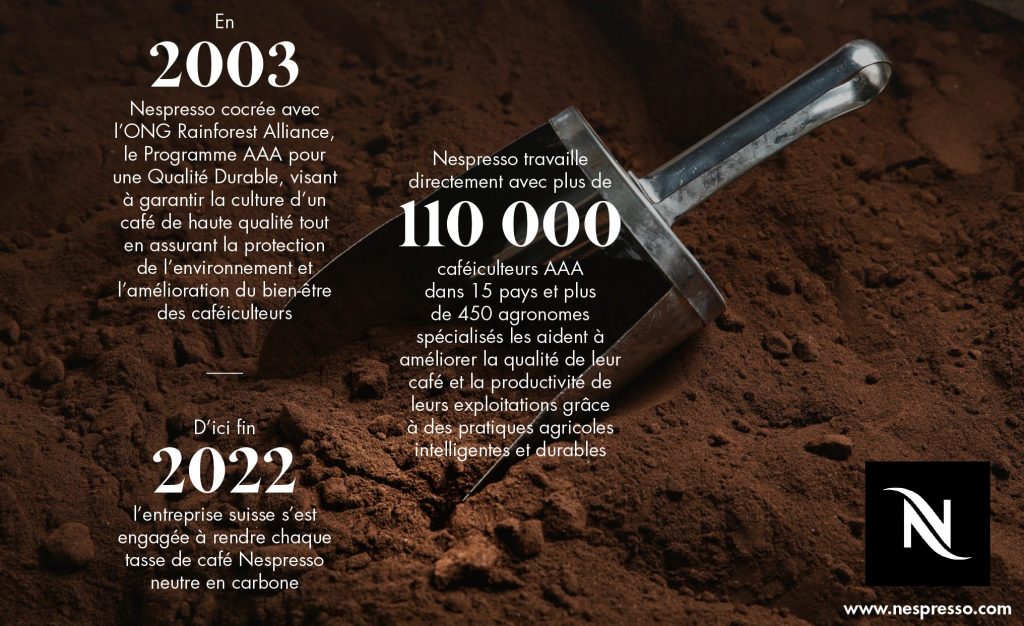

Feared by luxury houses at the beginning, making most of them late adopters, the digital world is now a major and unavoidable axis of their ...
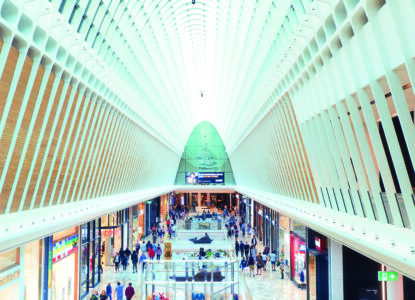
Scanning a barcode to know the composition of a product, reading other customers before choosing a restaurant, or comparing airfare prices, ...

From Christie’s sale of a piece of digital art for $69 million, to Jack Dorsey’s (co-founder of the Twitter platform) first twee...